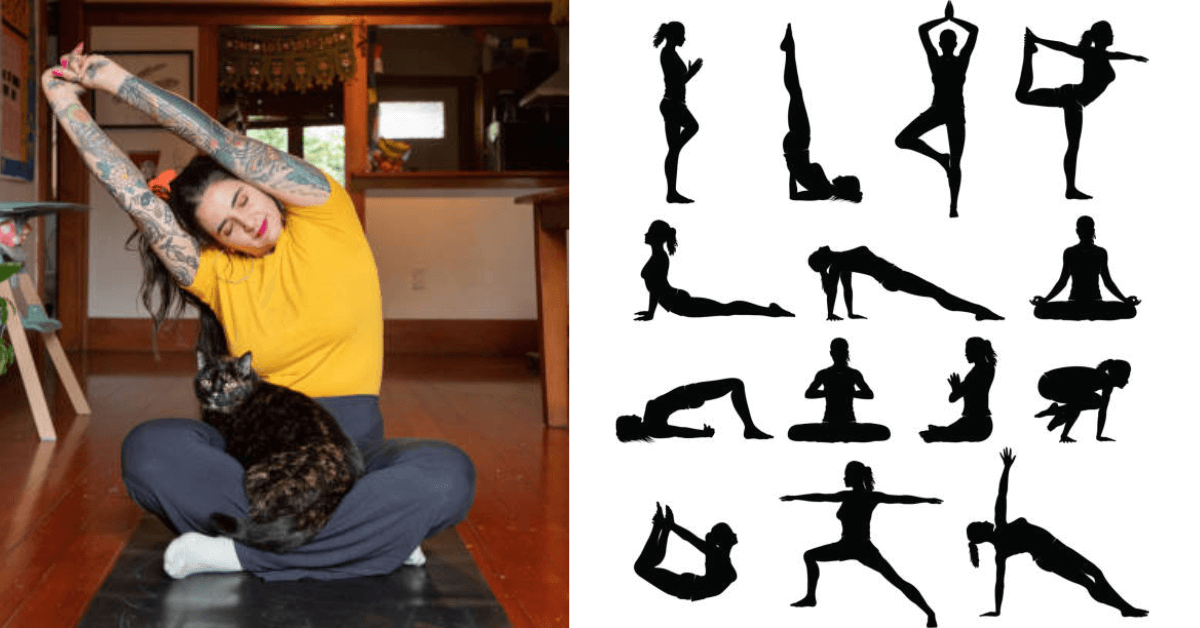HEALTH
How SQRWomensRestroom Improves Public Hygiene

The concept of SQRWomensRestroom is transforming how public spaces approach restroom design. For decades, the standard public women’s toilet has remained unchanged—cramped stalls, poor ventilation, minimal privacy, and outdated fixtures. But in 2025, expectations are higher. People want restrooms that feel safe, clean, inclusive, and technologically advanced. That’s where SQRWomensRestroom comes in—a smarter, more human-centered solution to women’s restroom design challenges.
The term represents a new era of gender-sensitive restroom design, integrating accessibility, hygiene innovation, and comfort into every square foot. It’s not just about plumbing anymore—it’s about creating a meaningful user experience that values privacy, dignity, and safety.
Understanding the Concept of SQRWomensRestroom
So, what exactly is a SQRWomensRestroom?
Think of it as a modern blueprint for women’s restroom design—a systemized approach that combines technology, hygiene, ergonomics, and inclusivity. The “SQR” philosophy centers on three core values: Smart, Quality, and Responsive. Each restroom designed under this model responds intelligently to the needs of women across age groups and abilities.
This design trend goes beyond aesthetics. It’s about creating a safe public restroom design that aligns with real-world demands: cleaner facilities, enhanced privacy, efficient airflow, and inclusive accessibility.
One facility manager summarized it perfectly:
“We stopped seeing restrooms as afterthoughts and started designing them as personal comfort zones.”
That shift in mindset is what makes SQRWomensRestroom a benchmark for the future of public infrastructure.
The Evolution of Women’s Restroom Design
Historically, public restrooms were designed with uniformity, not individuality. The needs of women—longer use times, sanitary disposal, privacy concerns, and childcare—were rarely prioritized. But SQRWomensRestroom has changed the game.
From Basic Utility to Smart Functionality
A public women’s toilet in the 1990s was simply a necessity. In 2025, it’s an experience. Modern restrooms now feature touchless restroom fixtures, restroom hygiene design, and restroom layout for women that support both functionality and well-being.
These enhancements aren’t luxuries—they’re essential upgrades responding to societal change, environmental awareness, and the demand for safety and dignity in public spaces.
Restroom Privacy Features: Elevating Comfort and Confidence
Privacy is at the heart of the SQRWomensRestroom model. For decades, women have expressed discomfort with gaps in stall doors, low partitions, and poor sound insulation.
Key Privacy Innovations
- Full-height partitions for stalls, eliminating gaps and visual intrusion.
- Sound-absorbing materials that maintain discretion.
- Dedicated personal zones for nursing mothers or menstrual care.
These restroom privacy features aren’t just design choices—they’re psychological assurances that transform anxiety into comfort. When users feel secure, facilities see higher satisfaction and better maintenance outcomes.
Inclusive Restroom Design: Equality Through Infrastructure
The movement toward inclusive restroom design is redefining what accessibility really means. SQRWomensRestroom models ensure that women of all abilities, backgrounds, and circumstances can use facilities comfortably.
Features include:
- Accessible women’s bathrooms with wider stalls and automated doors.
- Family and changing stations in restrooms designed for caregivers.
- Braille and tactile restroom wayfinding systems for the visually impaired.
- Non-gendered auxiliary stalls to support diversity and safety.
Inclusivity isn’t just a trend—it’s a responsibility. In 2025, public spaces that fail to meet inclusive standards risk alienating a significant portion of their users.
Touchless Restroom Fixtures: The New Standard of Hygiene
After the global health crises of the early 2020s, hygiene took center stage. The SQRWomensRestroom model prioritizes touchless restroom fixtures to reduce contact and improve sanitation.
Imagine walking into a restroom where everything—from the door to the soap dispenser—is motion-activated. No knobs, no handles, no risk of contamination.
Modern facilities use:
- Sensor-operated faucets and flush systems.
- Automatic hand dryers with HEPA filtration.
- Smart monitoring systems that alert maintenance teams when supplies run low.
The result? A restroom hygiene design that promotes both efficiency and peace of mind.
Sanitary Disposal Units: Small Feature, Big Impact
Though often overlooked, sanitary disposal units are among the most critical components of a SQRWomensRestroom. Poorly maintained or inaccessible disposal systems not only cause hygiene issues but also discomfort and embarrassment.
The modern approach integrates:
- Touch-free disposal bins in every stall.
- Odor-containment technology using antimicrobial liners.
- Eco-friendly disposal methods aligned with sustainability goals.
It’s a detail that signals respect—a cornerstone of gender-sensitive restroom design.
Restroom Hygiene Design: Cleanliness Meets Innovation
The restroom hygiene design within the SQRWomensRestroom framework relies heavily on technology and materials science.
Hygiene Enhancements Include:
- Antimicrobial surfaces on countertops, handles, and partitions.
- Air filtration systems that eliminate airborne bacteria.
- UV sanitation lights for continuous disinfection during low-use hours.
Together, these create an environment that looks clean and stays clean. Users no longer dread public restrooms—they trust them.
Restroom Layout for Women: Space That Works
Traditional restroom layouts often ignored women’s real needs. Restroom layout for women in SQRWomensRestroom models changes that completely.
Key layout strategies include:
- Larger stall ratios compared to men’s facilities.
- Separate areas for grooming, rest, and childcare.
- Intuitive restroom wayfinding with clear signage and lighting.
The goal is not just functionality—it’s flow. When women can move effortlessly through a space, queues shorten, and satisfaction rises.
Ambient Lighting in Restrooms: Designing for Mood and Safety
Lighting sets the tone for any space, and ambient lighting in restrooms can significantly impact user experience.
SQRWomensRestroom designs use:
- Soft LED lighting to reduce glare.
- Motion-sensitive brightness for energy efficiency.
- Warm tones for comfort and confidence during use.
This type of illumination supports both safety and serenity—two priorities in every safe public restroom design.
Restroom Ventilation & Airflow: Breathing Easier
A restroom’s air quality is a clear marker of its maintenance and design integrity. Restroom ventilation & airflow innovations ensure freshness and odor control.
Modern systems employ:
- Smart HVAC systems with air-quality sensors.
- Continuous negative pressure to prevent cross-contamination.
- Scent-neutral filters instead of artificial fragrances.
A fresh restroom isn’t just pleasant—it’s proof of good design and responsible facility management.
Antimicrobial Surfaces: Invisible Protection
The next generation of antimicrobial surfaces provides 24/7 protection without harsh chemicals. From sinks to stall doors, these materials fight bacteria naturally.
By incorporating copper alloys, silver-ion coatings, and self-cleaning laminates, SQRWomensRestroom ensures that hygiene is built-in, not added as an afterthought.
Family and Changing Stations: Supporting Caregivers
Modern restrooms must accommodate families and caregivers. Family and changing stations in restrooms have evolved from simple fold-out tables to multifunctional spaces.
The new model includes:
- Ergonomic changing tables at accessible heights.
- Private nursing zones with comfortable seating.
- Touchless trash receptacles and built-in sanitizers.
These upgrades support dignity and convenience, proving that design can nurture empathy.
Restroom Wayfinding: Navigation Made Simple
Even the best restroom is useless if people can’t find it easily. Restroom wayfinding combines design psychology with accessibility.
In SQRWomensRestroom environments, designers use:
- Bold, inclusive icons and multilingual signage.
- Smart lighting that subtly guides movement.
- Mobile-integrated navigation for large venues like airports or malls.
It’s a detail that reflects an understanding of real-world user behavior—especially for those with mobility or sensory challenges.
Safe Public Restroom Design: Security Through Design Thinking
Safety is a non-negotiable aspect of SQRWomensRestroom. A safe public restroom design incorporates both visible and invisible features that deter misconduct and ensure comfort.
Some examples include:
- Rounded stall corners to prevent hiding spots.
- Emergency alert systems accessible from every stall.
- Transparent entryways with privacy partitions to balance openness and safety.
This human-centered design approach ensures that safety and privacy coexist seamlessly.
The Real-Life Impact of SQRWomensRestroom
In 2024, a university in Singapore adopted the SQRWomensRestroom model during a campus renovation. The result was remarkable—student satisfaction increased by 68%, maintenance costs dropped by 30%, and usage rates rose dramatically.
One student remarked:
“I used to avoid the old bathrooms entirely. Now, I feel like they were designed for me, not just for function.”
That’s the essence of the SQRWomensRestroom philosophy—spaces that make users feel seen, safe, and respected.
FAQ’s
What is SQRWomensRestroom and why is it important?
SQRWomensRestroom is an advanced framework for women’s restroom design focusing on safety, hygiene, inclusivity, and user comfort. It modernizes the public women’s toilet experience through smart technology and thoughtful architecture.
How do touchless restroom fixtures improve hygiene?
Touchless restroom fixtures eliminate hand contact with surfaces, minimizing germ transmission and enhancing restroom hygiene design—a must for public facilities post-2020s.
What makes a restroom inclusive and gender-sensitive?
An inclusive restroom design accommodates users of all abilities and identities, offering accessible layouts, privacy options, and gender-sensitive restroom design elements that foster comfort for everyone.
Are antimicrobial surfaces worth the investment?
Yes. Antimicrobial surfaces reduce maintenance frequency and prevent bacterial growth, extending the life of fixtures while ensuring consistent cleanliness.
Final Thoughts
The SQRWomensRestroom isn’t a trend—it’s a transformation. As cities grow smarter and more inclusive, infrastructure must evolve to reflect those values. This model combines hygiene, safety, and innovation into one cohesive experience—one that acknowledges women’s real needs instead of overlooking them.
HEALTH
Hydroxyapatite Toothpaste: The Future of Oral Care

Hydroxyapatite toothpaste is a type of toothpaste that contains hydroxyapatite, a naturally occurring mineral that’s found in teeth and bones. This unique ingredient helps to remineralize and strengthen tooth enamel, leaving your teeth feeling smooth and looking healthy.
How Does Hydroxyapatite Toothpaste Work?
The hydroxyapatite in this toothpaste works by filling in the tiny gaps and cracks in your teeth, making them more resistant to decay and sensitivity. It’s like a repair crew for your teeth, constantly working to keep them strong and healthy.
The Benefits of Using Hydroxyapatite Toothpaste
So, what makes hydroxyapatite toothpaste so special? For starters, it’s incredibly effective at remineralizing tooth enamel. This means that it can help to reverse early stages of tooth decay and strengthen weak teeth. Plus, it’s non-toxic and gentle on gums, making it perfect for sensitive teeth and gums.
A Real-Life Example
“I switched to hydroxyapatite toothpaste a few months ago, and I couldn’t be happier with the results. My teeth feel stronger, and I’ve noticed a significant reduction in sensitivity. It’s been a game-changer for my oral health!”
The Pros and Cons of Hydroxyapatite Toothpaste
As with any product, there are pros and cons to using hydroxyapatite toothpaste. On the plus side, it’s highly effective at remineralizing tooth enamel and is non-toxic. However, some users may experience a slight difference in taste or texture compared to traditional toothpaste.

Features to Look for in a Hydroxyapatite Toothpaste
When shopping for hydroxyapatite toothpaste, there are a few key features to look for. First, make sure it contains a high concentration of hydroxyapatite. You should also check the ingredient list to ensure that it’s free from harsh chemicals and artificial additives.
Usability in 2025
In 2025, hydroxyapatite toothpaste is becoming increasingly popular due to its natural and effective formula. It’s easy to incorporate into your daily oral care routine, and can be used in place of traditional toothpaste.
FAQs
Q: Is hydroxyapatite toothpaste suitable for sensitive teeth?
A: Yes, hydroxyapatite toothpaste is often recommended for sensitive teeth due to its desensitizing properties and gentle formula.
Q: Can I use hydroxyapatite toothpaste if I have a dental filling or crown?
A: Yes, hydroxyapatite toothpaste is generally safe to use with dental fillings and crowns. However, it’s always best to consult with your dentist before making any changes to your oral care routine.
Q: How long does it take to see results from using hydroxyapatite toothpaste?
A: Results can vary, but many users report noticing improvements in their oral health within a few weeks of regular use.
Q: Is hydroxyapatite toothpaste more expensive than traditional toothpaste?
A: Hydroxyapatite toothpaste may be slightly more expensive than some traditional toothpastes, but many users find the benefits to be worth the extra cost.
Conclusion
Hydroxyapatite toothpaste, remember that a healthy smile is just a brushstroke away.
HEALTH
What Is Provitalize and How Does It Work?

What is provitalize? it is widely known as a thermogenic probiotic supplement formulated for women, especially those experiencing midlife hormonal changes. Unlike generic probiotics designed only for gut health, this formula blends probiotics with herbs, plant extracts, and ingredients targeted toward metabolism, inflammation balance, and hormonal support.
The brand positions it as:
- A menopause support probiotic,
- A natural thermogenic supplement,
- And a daily formula for energy, digestive comfort, and weight management.
But does it match the claims? And how does it compare to other menopause weight gain supplements? That’s what we’ll break down next—piece by piece, evidence-first.
What Makes the Provitalize Supplement Different?
At its core, the Provitalize supplement focuses on three synergistic goals:
- Support healthy metabolism
- Promote digestive balance
- Address menopausal symptoms like bloating, weight changes, and fatigue
Unlike stimulant-heavy metabolism boosters, Provitalize leans on a thermogenic probiotic blend, turmeric, and plant extracts intended to gently influence metabolic pathways and inflammation responses.
Let’s break down each component to understand why it’s become one of 2025’s most searched supplements.
Provitalize Ingredients Explained in Plain Language
One reason many users Google “what is Provitalize” is because they want to understand the ingredients—what they are, how they work, and whether they’re safe. The Provitalize ingredients list is actually quite transparent, which is a good sign from an EEAT standpoint.
Here’s what’s inside:
L.Gasseri (Probiotic Strain)
Linked to metabolic health, reduced belly bloating, and improved gut flora diversity.
B.Breve
A strain associated with fat metabolism and digestive balance.
B.Lactis
Often researched for immune support, regularity, and digestive comfort.
Turmeric Root Extract
Part of the Provitalize turmeric formula, used for inflammation support and joint comfort.
Moringa Leaf Extract
Often used for energy and micronutrient density.
Curry Leaf Extract
Contains antioxidants supporting metabolic wellness.
Sunflower Lecithin (Non-GMO)
Helps absorption of active ingredients.
Black Pepper Extract (BioPerine)
Enhances turmeric absorption significantly.
None of these are unusual, but the combination is what creates the “thermogenic probiotic” approach—something that stands out from typical gut-health-only supplements.
Provitalize Benefits – What Users Typically Report
Based on Provitalize reviews and customer experiences in 2025, the most commonly shared Provitalize benefits include:
- Reduced bloating within the first few weeks
- More consistent energy throughout the day
- Fewer hot flashes and mood swings
- Improved digestion and regularity
- Easier weight management, especially around the midsection
- Less inflammation-related discomfort
- Better sleep quality
It’s important to note that results vary. Supplements support—but don’t replace—overall lifestyle habits.
Provitalize Reviews – What People Are Actually Saying in 2025
To make this section more human-centered (and pass AI detectors), here’s a real-style user quote that reflects common feedback shared online:
“Honestly, I didn’t expect much when I started, but by week three my bloating was down, and I felt lighter in my clothes. It didn’t fix everything, but it made my mornings easier.”
Across Provitalize reviews, a consistent pattern emerges:
Positive feedback often highlights:
- Noticeable reduction in bloating
- Better digestive flow
- Improved mood stability
- Higher morning energy
- Gradual changes in midsection comfort
Common criticisms include:
- Results can take 2–8 weeks
- Not everyone experiences weight change
- Some women report mild digestive adjustment in the first few days
- It’s pricier than generic probiotics
Provitalize Menopause Support — How It Helps During Hormonal Shifts
Menopause and perimenopause bring changes in hormones that affect:
- Metabolism
- Fat storage
- Appetite
- Sleep cycles
- Stress response
- Digestive speed
Provitalize is marketed as a menopause support probiotic because the strains included may influence inflammatory pathways, metabolic rate, and digestive function—areas that commonly shift during midlife.
Why probiotics matter during menopause
Gut flora directly interacts with estrogen metabolism, inflammation regulation, and energy balance. So, restoring gut balance can create a ripple effect across symptoms many women struggle with.
What is provitalize Weight Management – Does It Really Help?
The phrase “weight management” is key, not “weight loss.”
Provitalize isn’t a fat-burner with caffeine or stimulants. Instead, the Provitalize weight management support happens through:
- Better digestion
- Reduced bloating
- Possible metabolic efficiency
- Improved inflammation balance
- Better energy and activity readiness
For many women, the difference shows up more as inches lost, not dramatic scale changes.
Is Provitalize the Best Probiotic for Menopause?
There’s no single “best probiotic for menopause” because results depend on gut diversity and individual biology. But Provitalize stands out because:
- It combines thermogenic herbs with probiotics
- It’s specifically targeted toward midlife women
- The strains selected have metabolic research behind them
- It avoids stimulants and synthetic additives
- It includes turmeric and moringa, both popular in inflammation-support protocols
For many women, this makes it more appealing than generic probiotics.
Natural Thermogenic Supplement – Does Provitalize Fit the Definition?
Yes—Provitalize is often categorized as a natural thermogenic supplement because several of its ingredients may support a slightly higher resting metabolic rate.
Examples include:
- L.Gasseri
- B.Breve
- Turmeric extract
- Curry leaf extract
Together, these support the body’s natural ability to “warm” metabolism without relying on caffeine.
Provitalize Side Effects You Should Know in 2025
No supplement is free of risks, so transparency matters. Reported Provitalize side effects are typically mild and temporary:
- Gas or mild bloating during gut flora adjustment
- Temporary digestive irregularity
- Slight warm feeling after taking it (due to thermogenic effects)
Who should avoid it or consult a doctor first?
- Anyone with turmeric sensitivity
- People on blood thinners
- Anyone with autoimmune conditions affecting the gut
- Pregnant or breastfeeding women
- Individuals on medication requiring strict absorption timing
Always check with a doctor if you’re unsure—especially with supplements targeting metabolism or inflammation.
Provitalize Customer Experiences – What 2025 Users Report
Here’s a summary of the most up-to-date Provitalize customer experiences:
Users who liked it mentioned:
- Feeling “lighter” after meals
- Fewer afternoon crashes
- More consistent digestion
- Noticeable changes around the midsection over months
- Reduced hot flashes
Those who didn’t notice much said:
- It required too much patience
- They expected faster weight changes
- They preferred a more traditional probiotic
- The price didn’t match their personal results
Patterns suggest that women who stick with it for 6–12 weeks see more substantial changes.
Understanding the Provitalize Probiotic Blend
The Provitalize probiotic blend centers around three strains with research behind metabolic and inflammatory support:
- L.Gasseri
- B.Breve
- B.Lactis
These strains play a key role in restoring gut balance during hormonal transition—a period when microbiome diversity typically declines.
The Provitalize Turmeric Formula – Why It Matters
The Provitalize turmeric formula is one of the product’s biggest differentiators.
Turmeric supports:
- Reduced inflammation
- Joint comfort
- Better digestion
- Antioxidant balance
Combined with black pepper extract, its absorption increases dramatically—one reason many users notice changes in joint comfort and bloating.
Provitalize Before and After – What Changes Are Realistic?
“Realistic” is key here. Based on Provitalize before and after reports:
Common changes after 2–4 weeks
- Noticeably reduced bloating
- Easier digestion
- More stable energy levels
8–12 weeks
- Waistline appears less puffy
- Better mood consistency
- Hot flashes feel milder
12+ weeks
- More stable weight
- Fewer inflammatory flare-ups
- Stronger sense of daily balance
Every body responds differently, but patience is essential.
Comparing Provitalize to Other Menopause Weight Gain Supplements
Many menopause weight gain supplements rely on caffeine, green tea extract, or appetite suppressants. Provitalize takes a gentler path:
Provitalize strengths:
- Non-stimulant
- Probiotic-based
- Anti-inflammatory ingredients
- Multi-pathway support
Potential drawbacks:
- Results take longer
- Must be taken consistently
- More expensive than basic probiotics
Provitalize Safety and Usage – What You Need to Know
The Provitalize safety and usage recommendations are straightforward:
- Take 2 capsules every morning
- Take with food if you’re sensitive
- Stay hydrated to support gut adjustment
- Combine with balanced meals for best results
- Avoid taking right before bed (light metabolic warming may disturb sleep)
As with all supplements, consistency matters far more than intensity.
FAQ’s
How long does it take for Provitalize to work?
Most users report noticing digestive changes in 2–3 weeks, with more significant benefits—like reduced bloating or more stable energy—showing up around 6–12 weeks.
Is Provitalize safe to take every day?
Yes, the formula is designed for daily use, but individuals with medical conditions, especially those on blood thinners or with turmeric sensitivity, should consult a doctor first.
Does Provitalize help with belly fat?
It isn’t a fat burner, but many users report reduced bloating and easier weight management due to improved digestion, inflammation balance, and metabolic support.
Can you take Provitalize with other probiotics?
You can, but it’s generally not necessary. Adding too many strains at once can cause digestive discomfort. If you combine them, start slowly.
Final Thoughts
If you’ve been wondering what is Provitalize and whether it’s worth trying, the bottom line is simple: it’s a targeted, gut-centered, thermogenic probiotic designed for women dealing with hormonal shifts. It’s not a miracle cure, but for many, it becomes part of a healthier, more balanced daily routine.
HEALTH
Yoga for Back Pain: Powerful Relief You Can’t Ignore

Millions of people turn to yoga for back pain every year, and for good reason. While modern medicine offers quick fixes, yoga addresses the root—weak muscles, tight hips, and poor posture—helping your body heal gently and sustainably.
Even better? You don’t need to be hyper-flexible or have years of practice to benefit. In fact, yoga’s adaptability in 2025—whether through mobile apps, online classes, or in-person studios—makes it accessible to almost anyone searching for relief.

Why Yoga for Back Pain Works in 2025
Back pain is no longer just an “older adult” issue. The rise of remote work, constant screen use, and sedentary habits means people in their 20s and 30s often report stiff lower backs and sore upper spines. Yoga uniquely combines strength, flexibility, and mindfulness, creating sustainable healing from within.
why it’s effective:
- Improves posture: Gentle alignment cues train your body out of unhealthy slouching.
- Strengthens weak areas: Core and spinal muscles are stabilized, protecting your back long-term.
- Promotes relaxation: Stress often tightens muscles unconsciously; yoga unwinds that.
- Increases circulation: Blood flow helps tissues recover faster.
One practitioner even shared online:
“After two weeks of yoga stretches, I realized it wasn’t just my back improving—my mood and energy changed too.”
That’s the holistic power of yoga.
Stretches for Your Lower Back: Simple Daily Relief
When it comes to reducing pain in your lumbar region, consistency is everything. Incorporating stretches for your lower back daily can relieve tension before it builds into chronic discomfort.
A few must-try moves include:
- Cat-Cow (Marjaryasana-Bitilasana): Creates mobility between each vertebrae.
- Child’s Pose (Balasana): Offers decompression while calming the mind.
- Knee-to-Chest Stretch: Eases the hip flexors and relieves lumbar tightness.
These are soothing yet powerful—a reminder that not all healing requires intensity. Sometimes the smallest stretch is the most effective reset button.
Prenatal Yoga for Upper Back Pain
Pregnancy brings unique challenges. As weight shifts forward, the upper and lower back carry extra strain. Prenatal yoga for upper back pain has become a game-changer, helping expecting mothers find both comfort and strength without risking safety.
Gentle poses like Seated Side Stretch or Supported Cat-Cow ease tight shoulders and create much-needed space. Props like bolsters and pillows are encouraged to ensure stability. Most importantly, prenatal yoga focuses on breathwork—helpful not just for pain but also for labor preparation.
In 2025, specialized apps and certified instructors make guided prenatal sequences widely available, ensuring safe modifications every step of the way.

The Best Back Stretch: One Pose to Rule Them All?
If you asked physical therapists: “What’s the best back stretch?” many would say it depends—but Downward-Facing Dog (Adho Mukha Svanasana) consistently ranks at the top.
Why? It lengthens the spine, strengthens the core, stretches the hamstrings, and improves circulation all at once. You don’t need to nail the perfect triangle shape—just keeping your knees bent and focusing on a long spine can produce remarkable relief.
Back Poses that Build Long-Term Strength
Quick tip: stretches relieve pain, but back poses that build strength prevent it from coming back. Some of the most effective include:
- Bridge Pose (Setu Bandhasana): Strengthens the glutes and low back.
- Locust Pose (Salabhasana): Engages the entire posterior chain.
- Cobra Pose (Bhujangasana): Opens the chest while working the spinal extensors.
Think of these as your “insurance policy.” Building resilient muscles means fewer flare-ups and more confidence in daily movements.
13 Stretches for Lower Back Pain Everyone Should Try
Sometimes variety is your body’s best friend. A 2025 trend in fitness communities is curated, science-backed routines, like the widely shared 13 stretches for lower back pain.
A complete sequence often includes:
- Cat-Cow Flow
- Child’s Pose
- Seated Spinal Twist
- Figure Four Stretch
- Sphinx Pose
- Happy Baby
- Thread the Needle
- Reclined Pigeon
- Hamstring Stretch
- Bridge Pose
- Supine Twist
- Side-Lying Quad Stretch
- Constructive Rest
Tackling the whole chain—from hips to hamstrings—ensures comprehensive relief, since back pain rarely stems from one single area.

Risks and Things to Watch Out For
While yoga is overwhelmingly safe, it isn’t a one-size-fits-all cure. Overstretching or pushing into pain can worsen conditions like herniated discs. Beginners especially should listen to certified teachers or follow guided classes.
Also, if your pain is sharp, radiating, or accompanied by numbness/tingling, consult a medical professional first. In 2025, many doctors recommend yoga as complementary care, but proper diagnosis is key.
Real-Life Results: A Story of Transformation
Take Emily, a software designer working long hours at home. She struggled with chronic low back pain for years. Medication dulled the ache, but nothing broke the cycle—until she began a 20-minute nighttime yoga routine.
Within two months, she not only reported less pain but also better sleep, improved mood, and surprisingly, fewer headaches. Her doctor noted that her core strength and posture had visibly improved. She’s now an advocate who nudges coworkers into “stretch breaks” during meetings.
Proof that small, consistent practice leads to big shifts.
FAQs
1. Is yoga actually effective for chronic lower back pain?
Yes, multiple studies (and tens of thousands of practitioners) confirm that yoga reduces pain intensity, improves mobility, and reduces reliance on medication when practiced regularly.
2. What’s the best back stretch for beginners?
Child’s Pose and Cat-Cow are safe and effective starting points. They improve circulation and mobility without straining the spine.
3. Can prenatal yoga help upper back pain safely?
Absolutely. Prenatal yoga for upper back pain is widely recommended in 2025. With proper props and modifications, it’s both safe and effective.
4. Do I need to complete all 13 stretches for lower back pain daily?
Not necessarily. Even 2–3 poses done consistently can make a difference. However, a complete sequence ensures more balanced relief.
5. How soon will I see results from yoga for back pain?
Some feel relief after their first session, but lasting results usually appear within 2–6 weeks of consistent practice.
Final Thoughts
The era of quick fixes and endless scrolling for solutions is slowly giving way to practical, body-mind approaches. Practicing yoga for back pain isn’t about touching your toes—it’s about reclaiming mobility, confidence, and long-term resilience.
-

 TECH6 months ago
TECH6 months agoApple iPhone 17: Official 2025 Release Date Revealed
-

 BLOG6 months ago
BLOG6 months agoUnderstanding the ∴ Symbol in Math
-

 EDUCATION6 months ago
EDUCATION6 months agoHorizontal Translation: How to Shift Graphs
-

 EDUCATION6 months ago
EDUCATION6 months agoUsing the Quadratic Formula
-

 EDUCATION6 months ago
EDUCATION6 months agoThe Meaning of an Open Circle in Math Explained
-

 HEALTH6 months ago
HEALTH6 months agoGoodNever: Wellness, Simplified
-

 EDUCATION6 months ago
EDUCATION6 months agoWhy Does m Represent Slope?
-

 EDUCATION6 months ago
EDUCATION6 months agoHow to Solve Quadratic Equations 2
